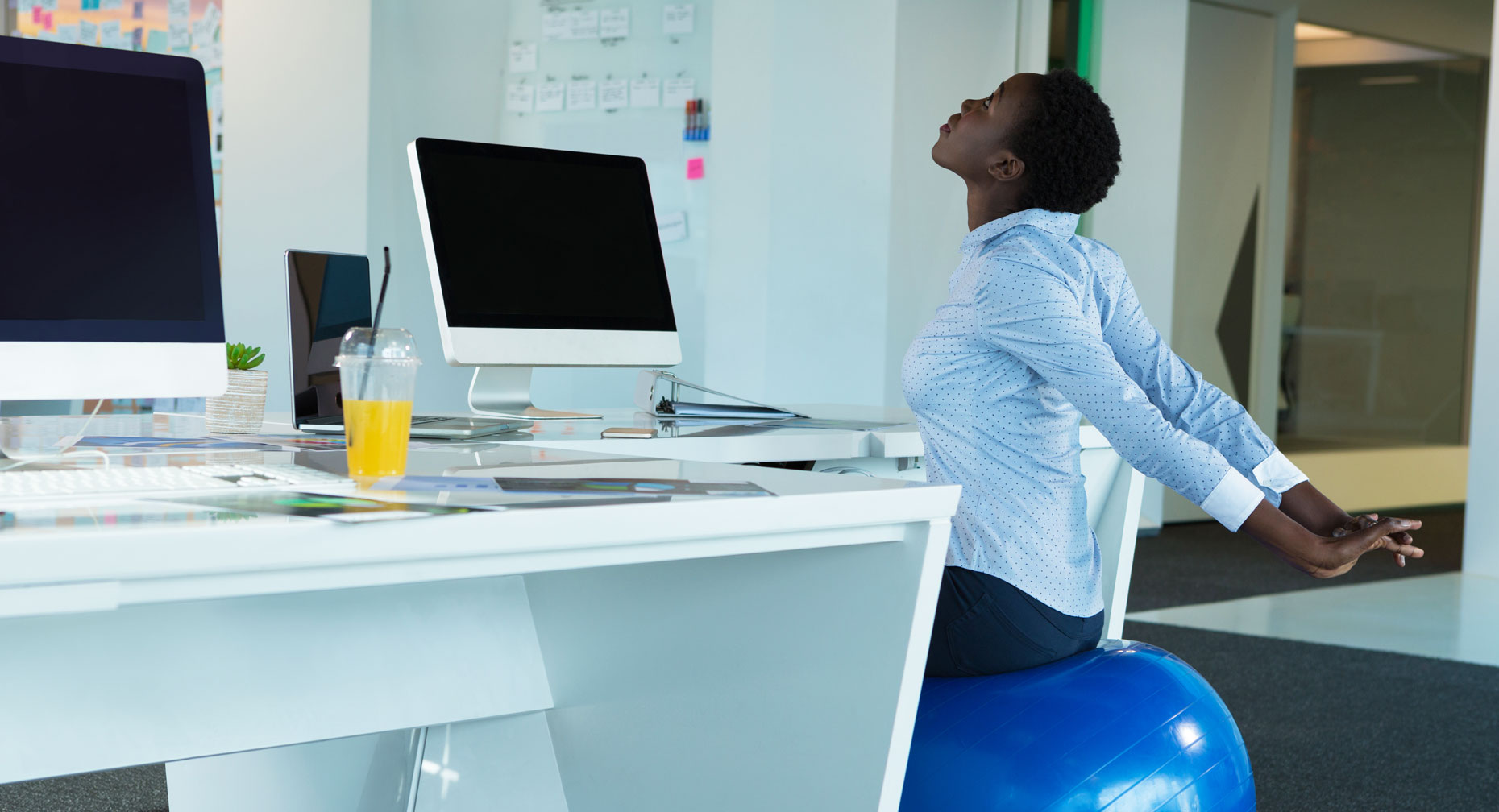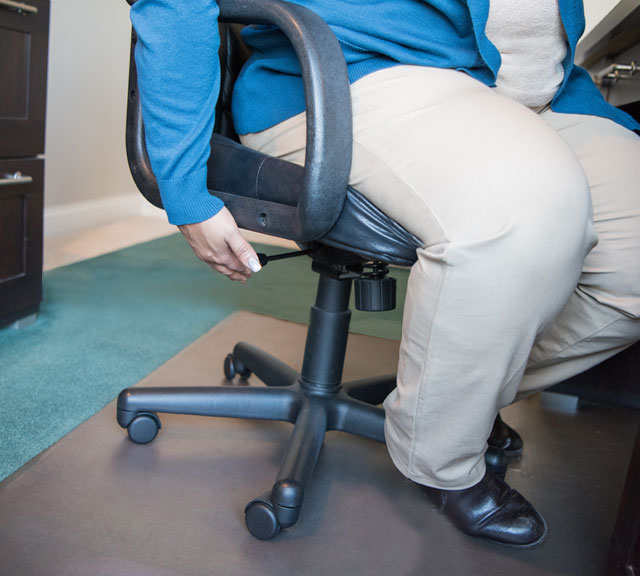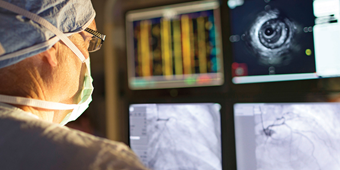- Back and Spine
- Back Pain
- Bone and Joint Health
- Health Topics
- Joint Conditions/Injuries/Treatment
- Joint Pain/Pain Management
- Lifestyle
- Prevention
- Spine Health
When Sitting Becomes a Pain in the Back

Find Your Perfect Match
Answer a few questions and we'll provide you with a list of primary care providers that best fit your needs.
Sitting in one place for too long – like at your desk – can literally become a pain in the back. But with a little bit of diligence, the pain can be avoided. Here’s how.
Check Your Posture
Good posture keeps your body parts aligned and balanced like they were meant to be. That means shoulders back, not slouched forward. Slouching can weaken the muscles that support your spine, and puts extra pressure on your discs. Good posture also means:
- Keep your feet flat on the floor (or on a small platform if they don’t reach the floor). Don’t cross your legs.
- Scoot back in the chair.
- Consider putting a cushion behind your lower back or at your shoulder blades to make you more comfortable.
- Position your computer screen so it is at eye-level, not above or below.
Every half hour get up and move for two minutes. This will get your blood flowing and help to keep your muscles and joints loose.
Adjust Your Chair

The traditional office chair is designed to provide complete support. Check to be sure yours is adjusted properly.
- When you rest your hands on your desk, your elbows should be at a 90- degree angle. If not, adjust the height of your chair.
- Can you easily slide your fingers under your thigh at the front of your chair’s seat? If not, use a footrest to raise your feet slightly.
- Sit all the way back in your chair. Is there room for your fist between the seat of the chair and the back of your calves? If not, adjust the back of the chair forward, or add a cushion behind your lower back, or get a new chair.
- Adjust the chair’s armrests so they cause you to lift your arms slightly at the shoulders.
Some back pain sufferers swear by kneeling chairs, designed to promote good posture without a back support. Others prefer exercise balls (also called yoga balls) instead of traditional chairs to help develop stomach and back muscles. Standing desks and walking desks are also options to consider if your workplace allows them.
Take Lots of Breaks
Every half hour get up and move for two minutes. This will get your blood flowing and help to keep your muscles and joints loose. Include simple back stretches every time you get up. When you can, take a long walk, focusing on ways to loosen your spine and the muscles that support it.
Find Your Perfect Match
Answer a few questions and we'll provide you with a list of primary care providers that best fit your needs.
Source: UCLA Spine Center; Spine-Health published by Veritas Health




